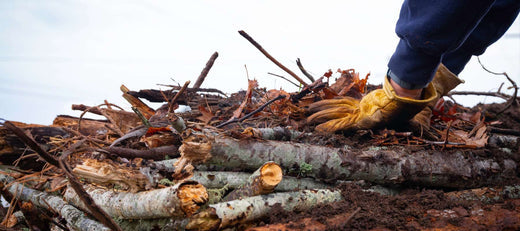Hugelkultur (Hügulkultur) has been used for centuries in Europe and Germany to build a garden bed. Traditional hugelkultur involves digging shallow trenches and then using rotten logs and plant debris to create mounds that are then covered with compost and soil used for planting.

The benefit of this method is that it uses materials that would otherwise be considered waste, and those materials are organic, so their decomposition only adds to the quality of the garden environment.
With the rising popularity and convenience of aluminum and other pre-built raised garden beds, you may not want to go through all the trouble of clearing sod, digging trenches, and building the mounds used in traditional hugelkultur. However, you can still use the same principles to fill your raised beds sustainably and economically. If you’ve bought good garden soil recently, you know how expensive it is. A method that provides a good growing environment without having to spend a lot on soil is a real benefit.
Fill your raised garden beds the hugelkultur way:
-
Choose a location - First, you want to choose a good sunny location for your raised bed. It should also be a nice level spot that will drain well.

- Create a barrier - Use layers of cardboard in the bottom of your bed to create a barrier and prevent any grass or weeds from growing up through the bed.
- Add logs - You can now start to fill your raised bed, up to half full with logs. If the logs are partially decomposed and rotten that’s even better. Use different sizes so that they interlock to fill space, starting with larger logs on the bottom and working up to smaller ones.
- Fill with branches - Use small branches and sticks to fill in the crevices created by the logs. Don’t go above the halfway point in the height of your bed.
- Add organic waste - Add some plant waste to your bed. This can include things like leaves, grass clippings, straw, and kitchen waste (things you would normally put in a compost bin). Keep the plant materials below 20 percent of the height of your bed.
-
Add compost - Add a layer of finished compost either from your own compost pile or commercially purchased.

- Finish with soil - Finally complete filling your raised bed with good quality, rich garden soil where you will plant your seeds and seedlings.
With this method, you will need about 70 percent less soil to fill your bed and as its contents decompose they will create more organic matter to enhance that soil. Hugulkultur is an economic and sustainable way to create your survival garden.























